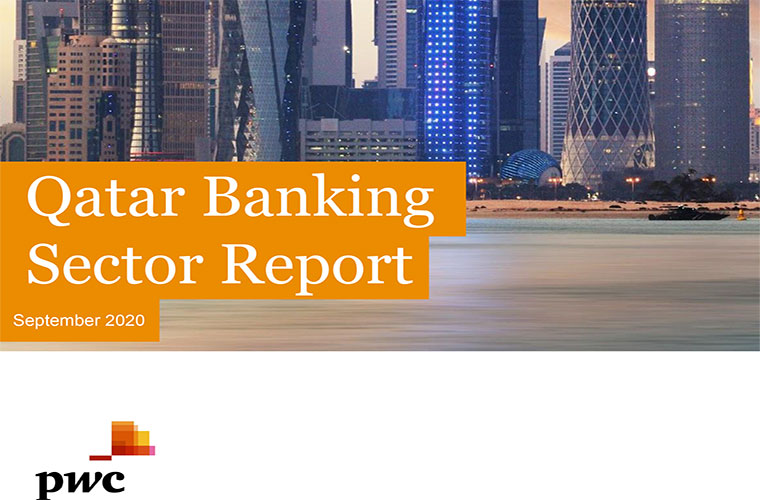The aggregated total assets of the 8 listed commercial banks grew 1.9% in H1
Banks have been rethinking strategies to accelerate their organisation-wide transformation agendas
The findings from PwC’s ‘H1 2020 Qatar Banking Sector Report’ covering 8 listed commercial banks, revealed that Qatar succeeded in minimising the impact of the Covid-19 pandemic on its banking industry. The aggregated total assets of the 8 listed commercial banks* grew 1.9% in the first half of 2020, to hit QAR 1.66 trillion, while the aggregated loans and advances to customers grew 2.1% to reach QAR 1.44 trillion in the first six months of 2020.
Globally, as the lockdown restrictions begin to ease, financial institutions are turning their attention to the new competitive landscape within the new normal, and how to come out ahead. Having secured short-term liquidity and taken measures to cope with loss in profitability, the financial industry is globally seeking opportunities to achieve competitive reinvention and differentiation.
Similar trends and dynamics are taking place in Qatar’s banking sector, where there has been an increased interest for Qatari financial institutions to forge new collaborations with Fintech companies, targeting a new audience segment of young digital-savvy customers both locally and internationally. In parallel, new synergies and mergers have also recently been discussed in Qatar and banks also grew their lending activity, which resulted in supporting local businesses.
Burak Zatiturk, Qatar Financial Services Leader, PwC Middle East, said: “The ongoing strategic rethinking provides a catalyst to accelerate the organisation-wide transformation agenda, especially focusing on honing operational resilience by realigning cost structure and productivity, upskilling staff to promote new and agile ways of working, minimising the financial impacts of insolvencies and NPLs, and monitoring risks associated with the current regulatory and government spotlight.”
In the 3 months between 31 March and 30 June, growth of assets was sustained by an increase of the aggregated equity of the 8 listed commercial banks, up by QAR 7.1 billion to QAR 182.6 billion (+4.1% vs Q1 2020) while total liabilities were down by QAR 5 billion to QAR 1.473 trillion (-0.34% vs Q1 2020). Furthermore, the asset composition of the 8 listed commercial banks registered a shift towards to the cash and balances with Qatar Central Bank increased by QAR 28.8 billion (vs FY 2019) to QAR 119.2 billion (+31.8% vs FY 2019), which was mainly reflected in the balance sheet with the reduction of due from banks down by QAR 22.6 billion (vs FY 2019) to QAR 106.8 billion (-17.4% vs FY 2019).
With regards to income statement, total profits of the 8 listed commercial banks reached QAR 11.47 billion, decreasing 8.8% compared to H1 2019. The profits were especially impacted by an intensification of the aggregated provisions by QAR 3.2 billion (+10.2% vs FY2019), which caused the increment of the aggregated provisions to total loans and advances ratio to 3.1% (+0.23 percentage points vs FY 2019). As a result of the global impact of the previous period, banking asset quality and profitability were expected to be impacted. While globally NPLs are on the rise, Qatar's banking sector has contained its impact on profitability .Financial institutions in Qatar were swiftly in initiating internal cost restructuring to deal with volatility; capitalising on the opportunities for transformation and digitalisation.
*The 8 listed commercial banks are: Ahli Bank, Commercial Bank of Qatar, Doha Bank, Khaliji Bank, Qatar International Bank, Qatar International Islamic Bank, Qatar National Bank, and Rayan.



